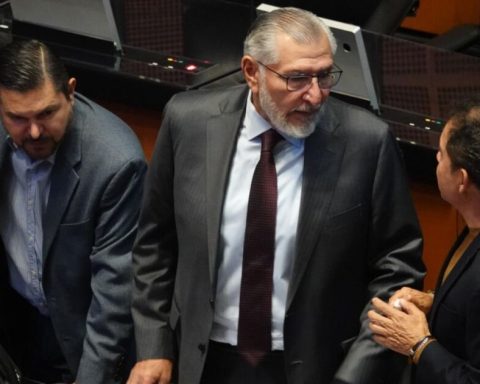cryptocurrency ethereumthe second largest in the world after the bitcoincompleted this Thursday a key technological mutation for its future, which will allow it to reduce its energy consumption by practically 99%.
“It’s over! (…) To all those who have contributed to the success of The Merge (“merger”): you can be very proud today,” tweeted Vitalik Buterin, co-founder of this blockchain.
And we finished!
Happy merge all. This is a big moment for the Ethereum ecosystem. Everyone who helped make the merge happen should feel very proud today.
— vitalik.eth (@VitalikButerin)
September 15, 2022
like all the cryptocurrenciesEthereum began to work through a chain of blocks of encrypted instructions, which are created incessantly by thousands of computers around the world, autonomously and automatically.
With this operation, the currency, which represents 20% of the market (40% for bitcoin) goes through a system known as “proof of work” (“proof of work”), which certifies that the registration has been made by those computers, to the “proof of participation” (“proof of stake”), in which basically those who financially contribute their capital are rewarded.
It is a complex change that from an ecological point of view has a huge impact on the world of cryptocurrencies. It is estimated that the operation of Ethereum until now consumed the same amount of electricity annually as New Zealand.
“Everything happened exactly as planned,” Simon Polrot, a blockchain specialist and former president of the Association for the Development of Digital Assets, told AFP.
Ethereum trading resumed on cryptocurrency platforms this Thursday, as CoinMarketwhere its price evolved slightly downwards, to 1,588 dollars per unit (-0.88%).
Cryptocurrencies are a fully computerized and virtual creation, based solely on the reliability of their solvency in the markets thanks to blockchains, which are supposed to be unforgeable.
volatile market
Ethereum is key in this very volatile market, because practically all the exchanges in the world of digital art are made with that currency.
Virtually all non-fungible tokens (NFTs), which are a kind of title deed to digital works of art, are created on the Ethereum blockchain.
“Decentralized finance applications,” which allow lending and borrowing through cryptocurrencies, “work correctly,” Manuel Valente, from the French platform Coinhouse, told AFP.
According to Charlie Erith, director of crypto asset investment fund ByteTree AM, Ethereum’s market share could grow “in the coming months and years.”
That percentage could “reach 25% by the end of the year and 30% by the end of next year,” confirmed Edouard Hindi, chief investment officer at the Tyr Capital fund in Geneva.
Cryptocurrencies have been the subject of strong criticism from environmental associations for this energy voracity.
With this change those criticisms could quickly disappear. But Ethereum faces another problem whose evolution will have to be monitored in the coming months.
The owners of large computers with enormous computing power, which will now go out of circulation, threaten to maintain the old way of operating, the “proof of work”, which was a lucrative source of income.
That could effectively create a “fork”, that is, two different blockchains under the same name.
















